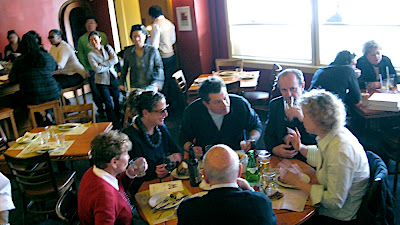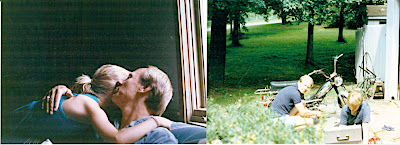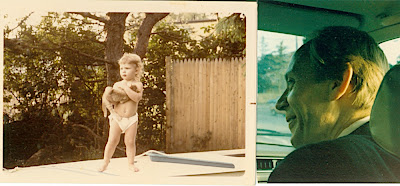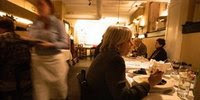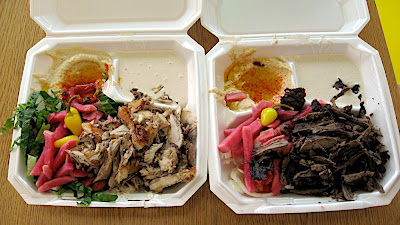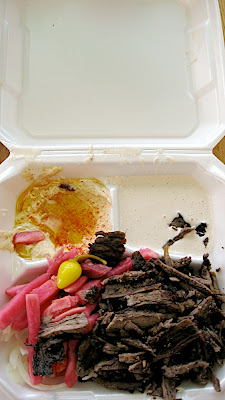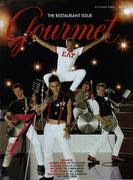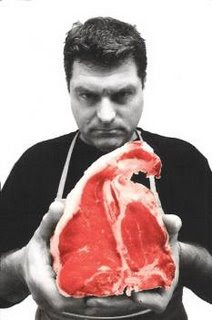
Over the past few years of living in Los Angeles and working in the restaurant industry I’ve become very aware that it takes a very specific kind of person to make me star struck. I’m nonchalant as rock icons shop at the local farmers market, blasé* when movie stars eat pizza at my restaurant, and giggle at the B-List actors hanging out at the neighborhood mall. But God help me when a famous chef or Food Network personality walks into the room. Get me a few feet from a great chef and I suddenly become a blabbering idiot.
(*With the exception of the appearance of Barbara Streisand, Bruce Springsteen, Joni Mitchell, Leonard Cohen or any of the cast of The Sopranos, Six Feet Under and The Wire)
Take for example the night Gordon Ramsay came into the restaurant. The minute I saw Ramsay walk in, I almost swallowed my tongue, whole. Later, I tackled a busser, just so I could clear his table. The night that Scott, the Hell’s Kitchen sous-chef came in I spit on myself while describing a dish. I shudder to think what the poor man thought of that. Another, equally embarrassing time, I rubbed a note in my pocket while I waited on one of the Top Chef contestants just so I wouldn’t blurt out “you should have won!” during his meal. You should of heard me the day I waited on hand-crafted meat king, Paul Bertolli. That time I got a case of the stutters and c-c-c-could barely make it through a s-s-s-sentence.
So when Nancy Silverton told me that Dario Cecchini, the world’s most famous butcher was in town and planned to have lunch at our restaurant, I hoped that my previous visit to his butcher shop in Panzano, Italy had inoculated me from my chef-crush sickness.
Not so much.
MEETING THE MAESTRO
Let’s go back to 2007. After working several months at Mario Batali and Nancy Silverton’s newly opened restaurant, Pizzeria Mozza, I got engaged. My husband to be, Hans, shares my love of food, so it didn’t take long for the two of us to decide to get married at a vineyard and honeymoon in Italy. Hans and I thought that perhaps a part of our honeymoon would include a visit to Dario Cecchini’s butcher shop after reading Bill Buford’s New Yorker articles on becoming a butcher (“Carnal Knowledge”) and later, his captivating non-fiction account of working in Batali’s kitchens in “Heat”. So when my culinary guru Nancy S. sat me down and gave me the list of MUST VISIT restaurants and life changing pastry shops, I listened. And when Nancy insisted that we make the drive through Tuscany in the direction of Dario Cecchini’s butcher shop, we knew we had to go.
So with our list of restaurants and well wishes from Nancy to Dario, we packed our bags and flew to Italy. After almost a week in Florence, my new husband and I followed the voice of our GPS lady to our eastern destination. We followed the insistent voice through the twisting mountain streets of Tuscany and all the way to the little hillside town of Panzano. By the time we parked our car on a steep side street by the tiny town square, it was mid-afternoon and we were ready to eat some freshly butchered meat. Thanks to the long, Italian lunches of shop keepers and locals, we had an hour to kill before Antica Macelleria Cecchini (the Ancient Cecchini Butcher Shop) opened.

The day was Saturday, a crisp October day, and we took our time as we walked the perimeter of the town center—maybe half a block in total—as we watched the locals bundled up in scarves buy hot sandwiches from a truck and families eye clothing vendors shelves of socks and bargain garments.
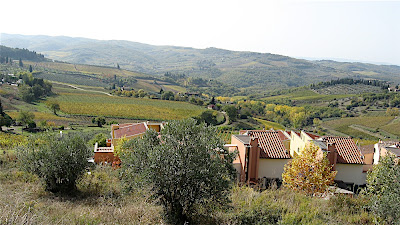
When it was time, we walked up the cobblestone street to the open door to Dario’s shop. An older man with a bowling ball sized belly sat in a chair by the open door reading his paper. Once inside, we were surprised to find that we were the first and only people in the shop. As we waited for the store to come alive with customers and employees, no one was behind the counter, we scanned the shelves of the shop and ogled the contents of the display cases. Behind the glass were gorgeous salumi, plump sausages, sumptuous cured and freshly butchered meats and a breathtakingly large bowl filled with whipped lardo. With or without Dario’s presence, we were in heaven.
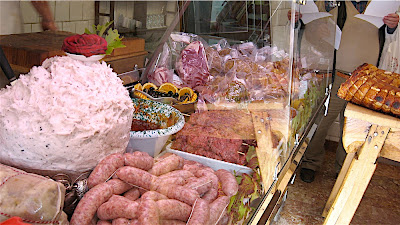
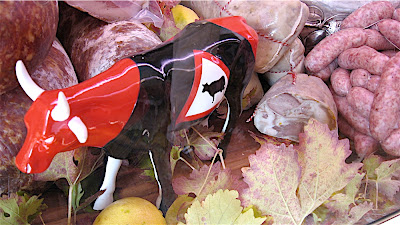
What pushed our happiness over the top was discovering the food covered table behind us. Unlike any butcher shop in America, at Antica Macelleria Cecchini almost all of the prepared foods are offered to the customer free of charge. The table held baskets of rustic bread lined with fat arms of rosemary, wood bowls of oil-soaked black olives and a butcher’s block lined with slices of prosciutto and salumi. While I struggled with understanding the etiquette of the butcher’s table (were we to pay to sample? Do we help ourselves?) my husband wasted no time in pouring himself a glass of Dario’s house red wine and piece of bread slathered in the whipped lardo speckled with Tuscan rosemary.



Behind me I heard a booming voice, loud like a ship’s horn, blasting orders to the man reading the paper. Behind the counter was a rather tall and imposing man in a black leather vest and a red bandana knotted around his thick neck. His short hair stood straight up off the top of his head, making him look like a devil from Dante’s poem, the Inferno. With the hands and broad shoulders of a super hero, this man was clearly Dario Cecchini. He was everything Bill Buford said he’d be.
As expected, I immediately became star struck. Gl
assy eyed and frozen like an Italian marble statue, I could do nothing but stare at Dario as he bantered with two gentlemen newly arrived at the store. I forced myself to grab a jar of house-made mostarda and a package of profumo dei Chianti off a shelf so I could give something for my strained brain to do. I pushed my purchase across the counter and smiled weakly as he rang up the order. I paid without saying a word. Luckily, my inability to speak Italian kept me from revealing the entire extent of my weakness as a star-struck foodie.
As I shuffled out the door, my courageous husband (an Italian speaker) introduced himself to Dario in order to pass on a message from our mutual acquaintance. I was surprised to watch Dario’s expression change at the simple mention of Nancy Silverton’s name.
“Naaaaaaaancy!” Dario grinned and threw up his arms.
When my husband explained that we were on our honeymoon, Dario hugged us both. “Braaaaavo!”
Through all of this, I maintained my inability to speak. I nodded like a bobble head.
Dario grabbed a jar of mostarda off the shelf, wrapped it in butcher paper and handed it to Hans. “For Nancy,” he explained. As we left the store, Dario called out to us in Italian—“I’m coming to LA soon! Tell Nancy I’ll come by the restaurant!”
VALENTINE’S DAY GIFT
Long after we returned to the states from our amazing honeymoon, I wondered when we might see Dario. Months passed and then, just last week, I heard that the famous Dante quoting butcher was spotted at the Santa Monica farmer’s market. It was said that Dario would be lunching at my restaurant on Valentine’s day. Of course, I immediately rearranged my plans for the day and invited fellow blogger, Leah of Spicy, Salty, Sweet, to join me for lunch at the restaurant.
With a box of chocolates and chocolate covered fruits from Susina Bakery clutched to my breast (more about the girls later), we patiently waited for a seat at the Pizza bar. Leah and I sipped crisp Fiano and kept an eagle eye on the door.
An hour passed, and still no Dario. Once seated, my very tall co-worker quickly swooped in to take our order. As he cleared our empty wine glasses he did a double take when he looked at me.
“Woah,” he said, eyeing my low cut dress. “Never seen those before…The girls are out in full force today.”
Well when the world’s most famous butcher comes to town, a girl has to represent. I might not be able to speak a lick of Italian, but the girls will do all the talking for me.

And talk they did. When Dario finally arrived (wearing a canary yellow down vest and matching yellow clogs) I swooped in. Doing my best hand gesturing, I mimed a “thank you”, a “great to see you again” and then shoved the box of chocolates into his hand. Leah, god bless her, saved me from the awkward silence and swooped in with her camera and snapped a picture. Thirty seconds later, we were back in our seats and I was hyperventilating.
I had done it.
I was, for the first time ever, a certifiable groupie. And, thanks be to sharing no common language, I was able to cover up my apparent star-struck symptoms.
